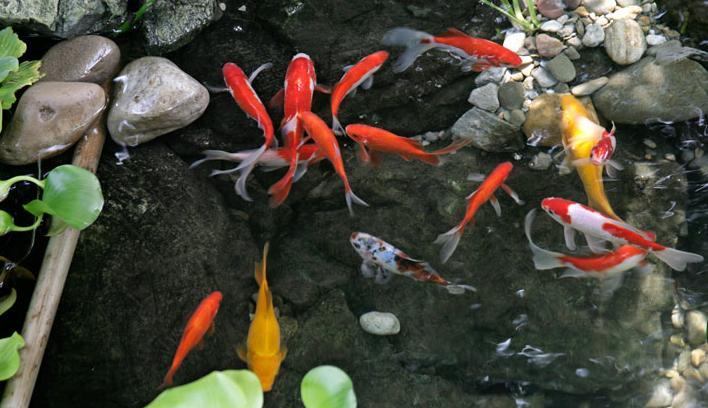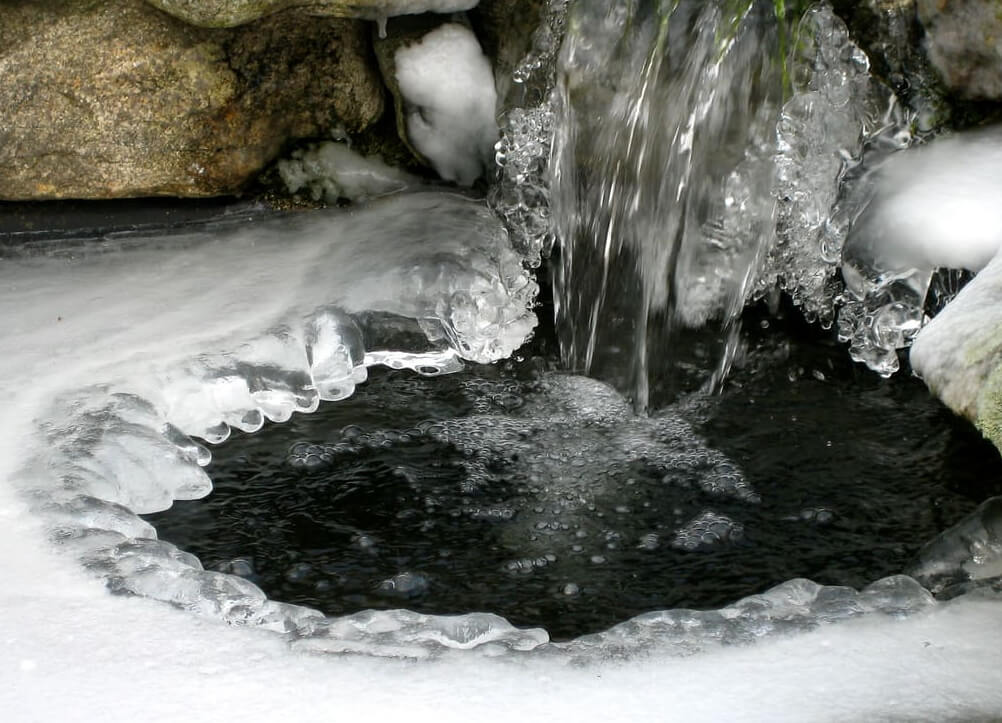As winter approaches and temperatures start to drop, koi fish naturally begin to prepare for the colder months. If you’re a koi owner, you may wonder what happens to your colorful fish as ice forms over the pond and the water grows chilly. The good news is that koi are resilient creatures, adapted to survive the winter with some simple preparations to keep them comfortable and healthy. Here’s what you can expect as your koi settle into winter and tips to help them thrive until spring.

1. Koi Enter a State of Torpor
In response to the dropping water temperature, koi fish enter a semi-dormant state called torpor. Unlike hibernation, which involves a complete shutdown, torpor allows koi to slow down their metabolism and conserve energy. As the water cools below 50°F (10°C), their activity level decreases significantly, and they start moving very little. You’ll notice they may hover near the bottom of the pond, where the water remains slightly warmer, and become less responsive to movement and sounds above the surface.
2. Digestive and Metabolic Slowdown
As koi enter torpor, their digestive and metabolic processes slow down dramatically. This is why it’s important to stop feeding your koi once the water temperature consistently drops below 50°F. Koi can’t properly digest food at low temperatures, and leftover food can rot, leading to poor water quality. The natural fat stores they’ve built up during the warmer months provide the necessary energy to sustain them through winter without additional feeding.
3. The Importance of Oxygen Levels
Even though koi aren’t as active during winter, they still need access to fresh oxygen. As ice forms over the pond’s surface, oxygen levels can decrease, especially in deep snow-covered ponds that receive less sunlight. To prevent low oxygen levels, consider using a pond de-icer and an aerator to keep a small hole in the ice. This combination allows harmful gases to escape the pond and keeps the water oxygenated, providing a safe environment for your koi.

4. Temperature and Depth Matter
The depth of your pond plays a crucial role in your koi’s winter survival. A pond that’s at least two feet deep allows for a warm layer of water at the bottom, where koi can rest safely as the water near the surface freezes. Be sure not to disturb this deep area of the pond after your koi have started torpor. Disturbing this warmer layer of water can shock your koi when cooler water mixes into it . In shallow ponds, the temperature can drop too low, endangering your koi. If your pond isn’t deep enough, you may need to consider moving your koi indoors to a temporary winter setup or adding a pond heater to maintain a stable temperature.
5. Maintaining Water Quality During Winter
While your koi are mostly inactive, keeping the pond’s water quality high is still important. A buildup of waste and decaying plant matter can introduce toxins into the water, even in winter. Before temperatures plummet, clean out any remaining debris that is floating or that has sunk to the bottom of your pond and trim back dead plants. A pond skimmer or filter can help remove excess organic matter. The weekly addition of cold water beneficial bacteria before the surface of your pond freezes will help to keep water quality crystal clear. Since koi are highly sensitive to ammonia and other toxins, a clean pond helps prevent health issues that can arise during the dormant season.

6. Spring Transition: Waking Up from Winter
As spring approaches and water temperatures rise above 50°F, your koi will gradually come out of their torpor and become more active. During this transition, avoid feeding them immediately; instead, wait until the temperature stabilizes around 55°F. Starting with a wheat-germ-based food will gently ease their digestive systems back into regular activity. Monitoring water quality, gradually increasing food intake, and observing your koi for any signs of stress or disease are essential steps to ensure a healthy transition into the warmer months.
Preparing Your Koi Pond for Winter: Key Takeaways
Stop Feeding Below 50°F: Koi can’t digest food effectively in colder water, so stop feeding once temperatures consistently fall below this threshold.
Keep Oxygen Flowing: Use an aerator and de-icer to maintain an oxygen exchange hole in the ice.
Clean your Pond: Remove debris and trim plants to maintain good water quality.
Monitor Pond Depth and Temperature: Ensure your pond is at least two feet deep or consider adding a heater in shallower ponds.
By taking these simple steps, you can help your koi fish safely navigate the winter months and wake up strong and healthy when spring arrives. With the right care, your koi will thrive through the colder season and continue bringing color and joy to your pond year after year.

